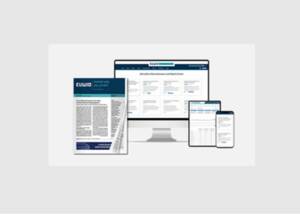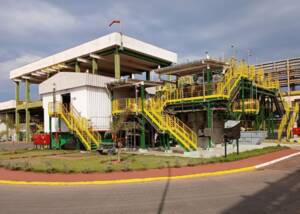German Paper Sack Industry stays the course
News General news
The German paper sack industry closed 2022 at a similar level to the previous year. The year was characterised by a partly strained raw material supply and associated cost increases as well as high sickness rates among paper sack manufacturers. Nevertheless, the members of the Gemeinschaft Papiersackindustrie e.V. (GemPSI) assess their business situation in 2022 as good.

In the first quarter of 2023, delivery times for most raw and auxiliary materials have normalised. However, GemPSI members expect fluctuations to come. This was the result of the survey for this year's industry barometer. The focus of the issue is the market for chemical products, which is becoming increasingly complex due to rising customer requirements as well as regulations and labelling obligations.
The German paper sack industry delivered around 845 million paper sacks in 2022. This puts it in a top position in a European comparison. The largest growth was recorded by the market segments minerals (+19.5 percent), milk powder (+14.6 percent) and miscellaneous (+16 percent. The market segments Food excluding Milk Powder (+9.4 per cent) and Seeds (+8 per cent) also recorded increases. Slight decreases in sales were recorded in building materials (-5.8 per cent) and chemicals (-1.8 per cent). GemPSI members were consistently satisfied with their business situation in 2022, with a score of 2.2 . "Our strategy of planning ahead and making close arrangements with our customers has once again proven its worth," explains Alfred Rockenfeller, Chairman of GemPSI. "As a result, we were able to supply our customers for the most part in line with demand and on time and conclude 2022 quite satisfactorily."
Review of a challenging year
A partially poor supply of raw materials as well as an associated increase in the costs of all raw materials and supplies essential to paper sack production, especially paper and plastics, continued to pose challenges for the German paper sack industry in 2022. With the start of the Ukraine war, the situation on the raw materials markets worsened. The supply chains became even more uncertain, delivery times lengthened and the sanctions reduced the availability of sack kraft papers in Europe and the USA. In addition, pandemic-related high levels of sick leave in the plants of German paper sack manufacturers caused numerous shift cancellations in the first half of the year. "Fortunately, we were able to absorb short-term supply chain interruptions and staff shortages well," reports Rockenfeller.
Recyclability and CO2 emissions remain important
In 2022, according to GemPSI members, the trend towards packaging with high recyclability and a low carbon footprint continued. Thereby, the emissions of the entire supply chain came more into focus (Scope 1-3). An average European paper sack already has a low carbon footprint of 85 g CO2e. Pilot projects with filling companies have shown that switching from a white to a brown outer layer could lead to a further improvement in the carbon footprint per bag. In addition, the REPASACK take-back system founded by GemPSI has become established in Germany. Through this system, 25,000 tonnes of paper sacks are recycled annually.
Turbulence expected in the current business year
In the first quarter of 2023, cost increases were primarily limited to energy, freight and personnel costs, according to GemPSI members. Prices for plastic films, adhesives and inks remained at a high level. Delivery times for raw and auxiliary materials have largely normalised, so that a basically good supply situation was reported. However, according to GemPSI members, the ongoing driver shortage and the political situation may lead to further failures in the supply chain. They therefore recommend their customers to maintain sufficient safety stock. Despite the continued uncertain circumstances, GemPSI members rate their business outlook for 2023 as satisfactory with a score of 3.3 points. They see themselves well positioned (2.3 points) in the market. They justify this with continuous new developments and a holistic approach to sustainability. With forward-looking demand planning, long-term cooperation with suppliers, total cost savings and innovative strength, they want to offer their customers added value.
In focus: paper sacks for chemical products
Paper sacks for chemical products are the second largest market segment of the German paper sack industry and account for about 17 percent of the total German market. In 2022, a total of 141 million sacks were delivered, 1.8 percent less than in 2021, but around 10 percent above 2020. Due to the market share and the high qualitative requirements, the segment occupies an important position for GemPSI members. Their customers in the chemical industry attach particular importance to freedom from dust (1.6 points), impermeability (1.6 points) and moisture protection (1.8 points) when choosing packaging.
Current situation in the market for chemical products
Due to record delivery volumes at the end of 2022, GemPSI members expected a declining order situation in the first and second quarter of 2023. However, the actual delivery situation turned out better than expected. The industry experts assume that the continuing difficult situation in the chemical industry will not be felt in the paper sack industry. They recommend chemical producers to constantly check their safety stocks in order to be able to control changes in delivery times.
Developments in the chemicals market Products
GemPSI members cite increasing automation as the overarching trend in the chemicals market for the next five to ten years. In addition, they assume that the sustainability goals of the chemical industry, such as CO2 reductions, zero waste and circular economy, will drive many new developments. Furthermore, they expect a continuous increase in technical, hygienic as well as other regulatory requirements for the packaging of chemical products. These will affect both national and EU-wide as well as packaging- and environment-specific legislation, such as the CLP regulation on the labelling of chemicals. "Already today, the paper sack is a high-performance yet sustainable and recyclable packaging with a low carbon footprint," says Rockenfeller. "We are confident that we can meet the increasing qualitative and regulatory requirements. To this end, we are continuously working on improvements to our packaging solutions."










